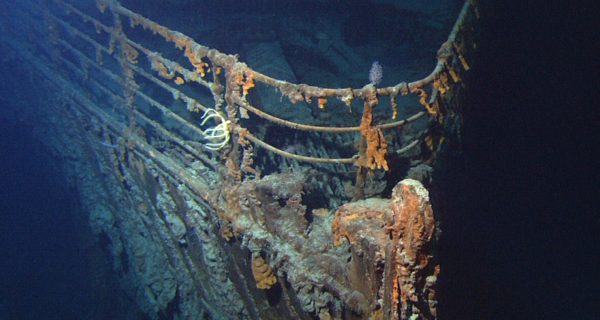When the RMS Titanic slipped beneath the waves 106 years ago today, she was the largest and most luxurious ocean liner in the world, and after all this time underwater, examples of her beauty can still be seen. Indeed, ever since the vessel was discovered in 1985, she has been giving up her secrets as successive expeditions have been used to explore the ill-fated White Star liner and penetrate deep into her interiors with increasingly sophisticated undersea video and lighting equipment, which have answered old questions and yielded new discoveries about the vessel said to be “unsinkable.”
One such fascinating discovery occurred back in 2005, when James Cameron – director of the 1997 film Titanic – led an expedition to the wreck sponsored by the Discovery Channel and featured on that network as Last Mysteries of the Titanic. Since his previous expedition in 2001, Cameron helped to develop remotely operated vehicles (ROV’s) smaller than anything else that had been used on the wreck, and which were sent from the manned submersibles to get further into the ship to find areas and features not yet seen by explorers.
Among those areas were the forward First Class cabins facing out to the promenade on A-Deck, which needed “privacy screens” in the windows which could be lowered or raised as necessary to prevent people strolling on the deck from looking inside the cabins, especially at night when the lights were on.
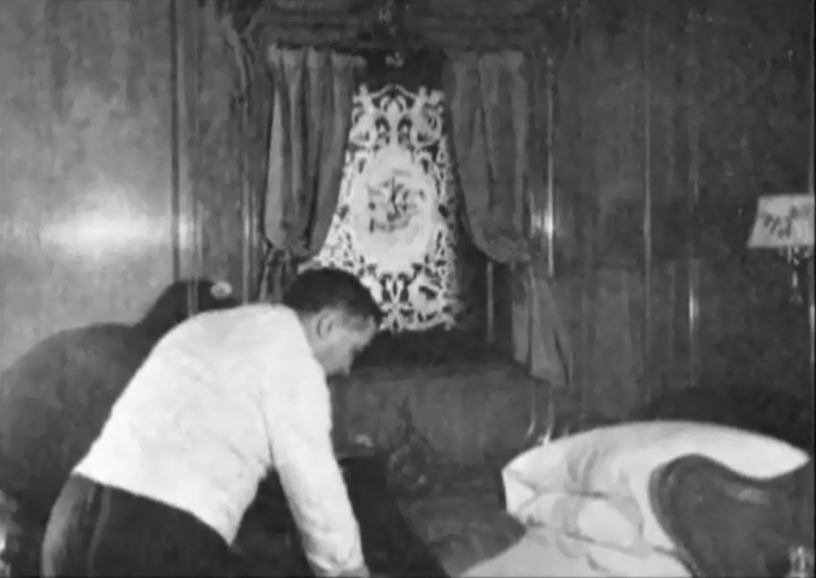
It was known that Titanic had these screens for the A-Deck cabin windows like her older near-twin sister Olympic, and there is a photographic record of a privacy screen aboard Olympic which featured an elaborate design that was etched into the screen. What was not known was whether the designs for Titanic’s screens were different, for there were no known photographic or design records of them, so when the explorers entered A-16 – occupied by Sir Cosmo Duff-Gordon – with one of the mini-ROV’s, they went up to the window to not only find the screen perfectly intact and secure in its position after nearly a century and 2 ½ miles underwater, but they found that it had a Celtic-inspired design.
This was significant because the design – containing as it did, the same basic elements from the screen aboard Olympic – was different from that fitted on the windows of the older vessel, which is not too surprising given that two sisters were different in several ways, big and small. However, because of Titanic’s short lifespan, much of what we believe to know about her is in fact based on what was aboard Olympic, which sailed the seas for a quarter-century and was therefore more extensively photographed. This discovery was further proof of Titanic’s unique identity from her sister with a design for something so small that was particular to her and her alone.
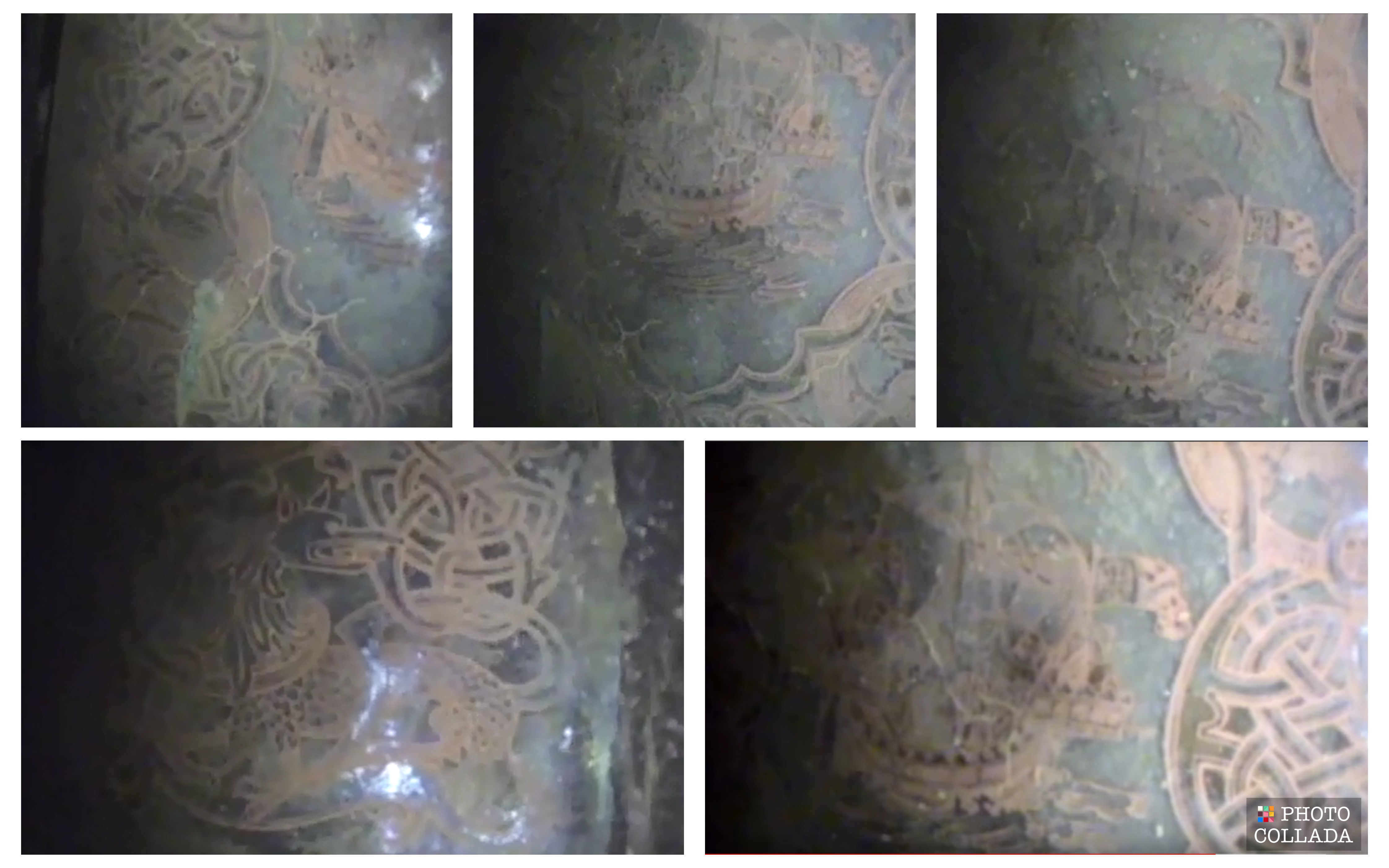
As Parks Stephenson, a member of that 2005 expedition, said on his website (which contains his CGI rendering of the screen), the screen is a “real work of beauty in spite of all the devastation around it”, and indeed, it is remarkable that it has survived to the present, having endured the sinking and Titanic’s hard landing on the ocean floor. He explained that this was likely possible due to the water itself acting as a shock-absorbent of sorts which protected the screen when the ship hit the bottom. Stephenson further noted that along with the Celtic knots, the screen was also intermixed with floral elements and contained phoenixes, dogs and nymphs (perhaps inspired by the Book of Kells, in Stephenson’s opinion), as well as a ship in the middle which flies “Crusader-style” crosses and a lion rampant, and aboard which is a tall person in the center who appears to be hauling in a net and who Stephenson characterizes as a possible “Christ-like figure.”
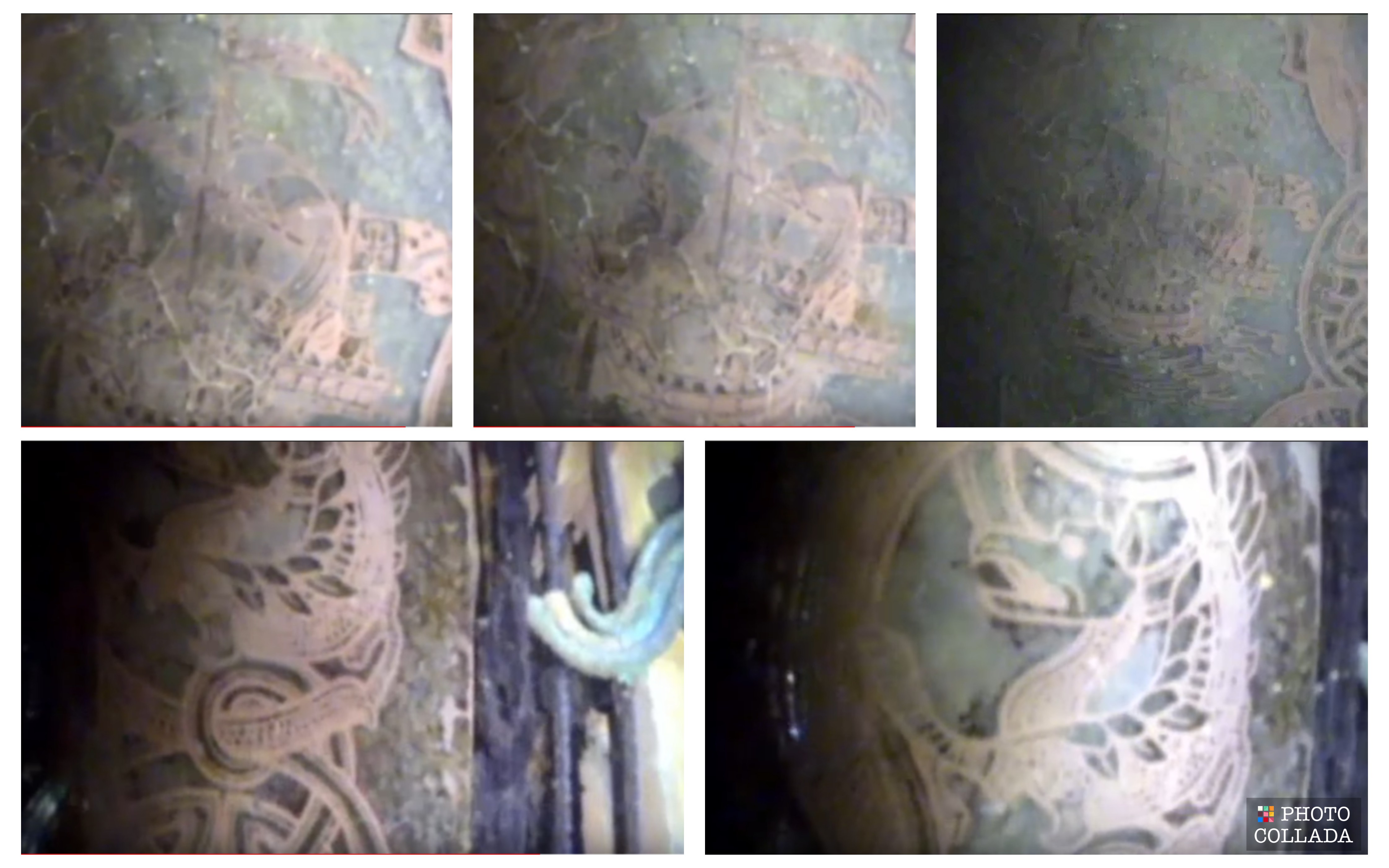
Given her birthplace of Belfast, Northern Ireland, it is perhaps not surprising that there was a Celtic Christian-inspired design somewhere aboard the Titanic. For my part, I do have a slight interest in Celtic sounds and culture, and this – interestingly enough – stems from Cameron’s 1997 Titanic movie, which also helped to spark my interest in the United Kingdom and Ireland, and in some way, they are all interrelated anyway.
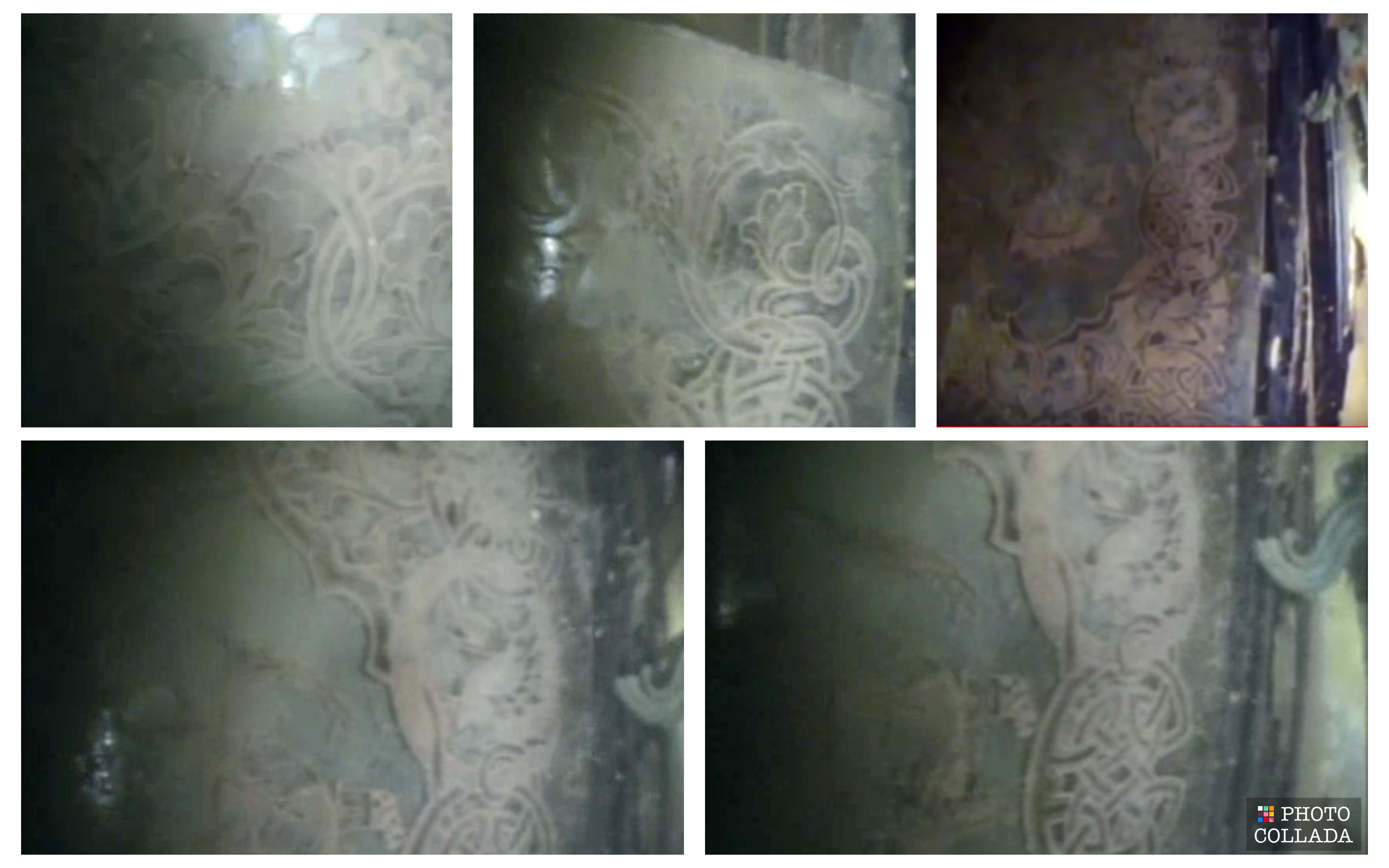
As for the 2005 discovery itself, it is just breathtaking to know that art and so much else representing the grandeur, majesty, and power of Titanic survives aboard her. Indeed, it was on this same expedition that the Turkish Baths were explored for the first time and found to be in a remarkable state of preservation. Again, the point of the expedition and the use of the mini-ROV’s was to uncover and document as much of the ship as possible, for Titanic is gradually disintegrating everyday due to the natural elements which are consuming her steel and wood bit by bit. At some point, the wreck of the two main sections of the ship will cave in, and while this may provide opportunities to explore areas uncovered by the disintegration, it will also destroy other areas, some of which have yet to be documented, as well as others that have been seen and known well for the last three decades.
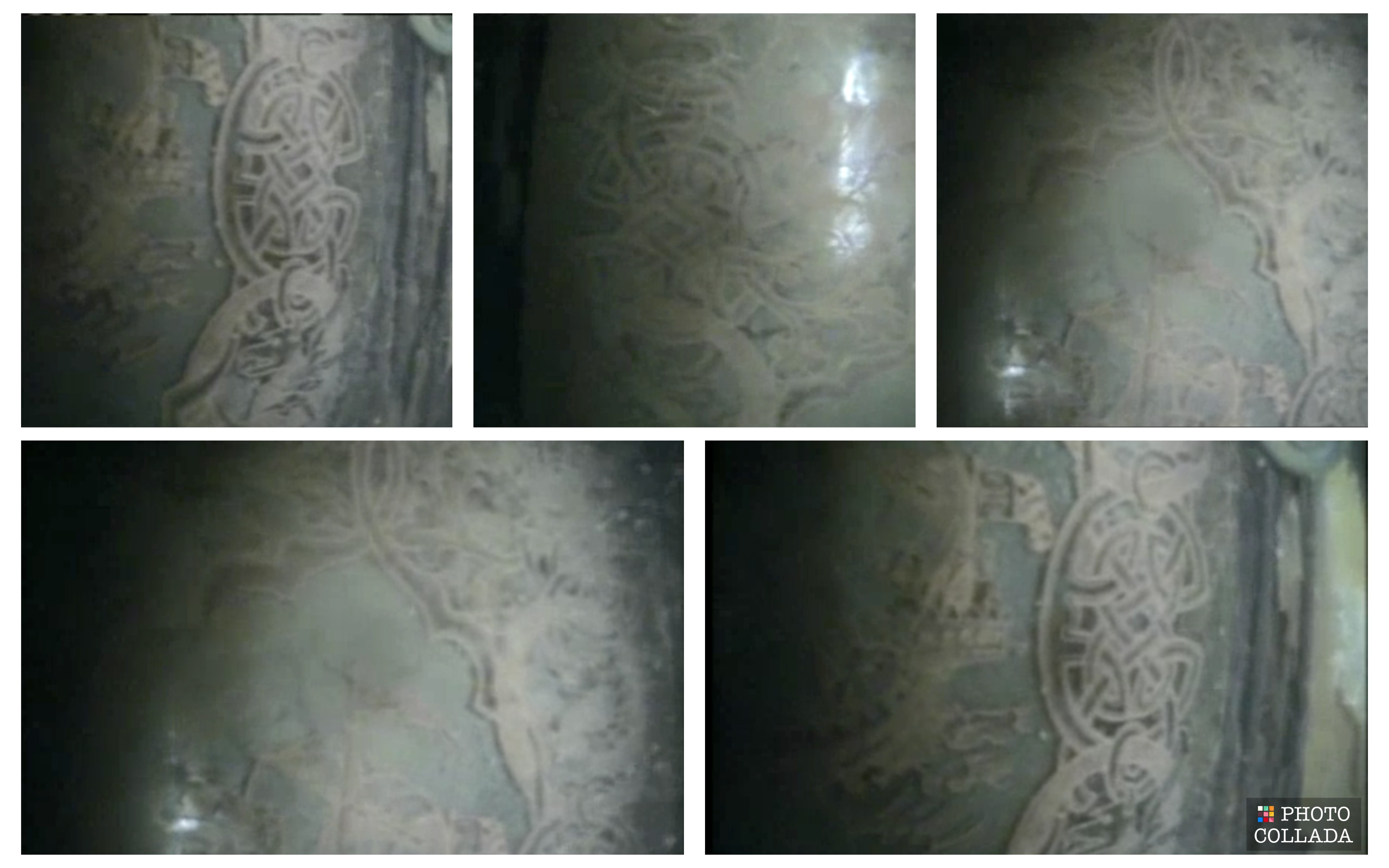
Therefore, we are thankful to James Cameron for doing much to bring renewed interest to the Titanic and helping us to understand more about her through his expeditions, which began in 1995 to shoot film for the movie. He claimed that this would be his last expedition, and in fact, he has not been back since, but the Titanic has affected his life in a way which goes beyond the film and he has taken a highly personal interest in the ship, her story, and the stories of the passengers and crew aboard (which is a common effect Titanic has on people, such as yours truly). Hopefully he or someone else will return soon with even better technology to get further into the great British vessel, so that perhaps more secrets (maybe more Celtic designs) may be found for the benefit of future generations.
